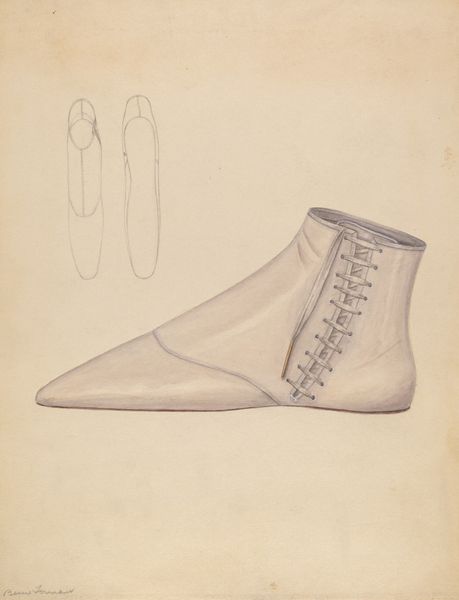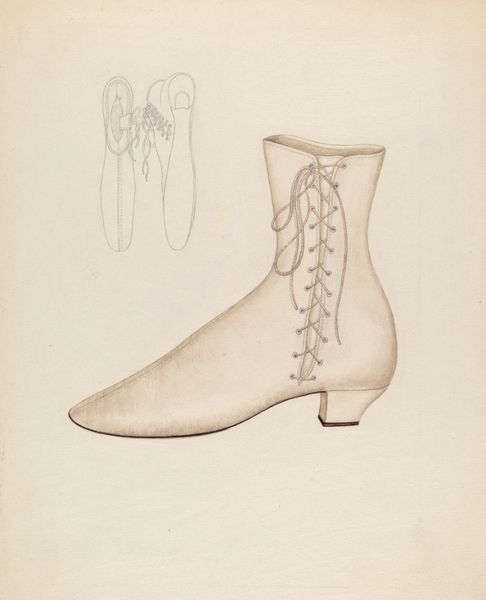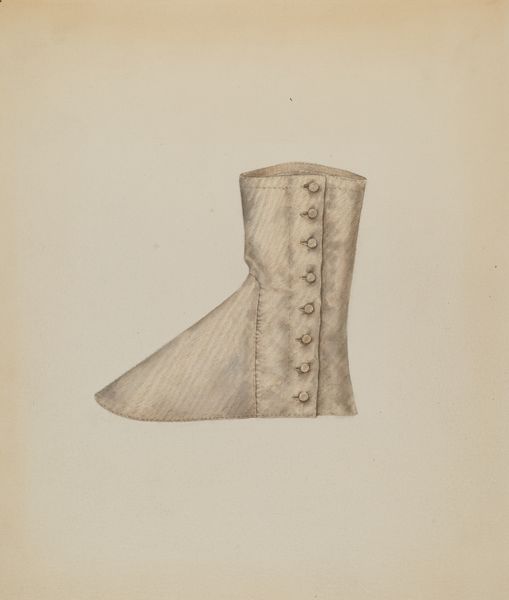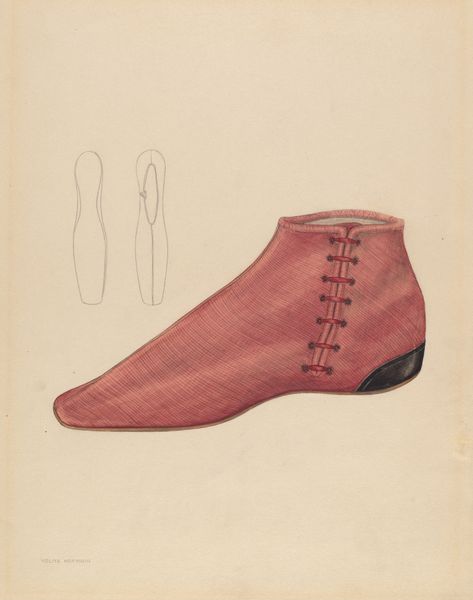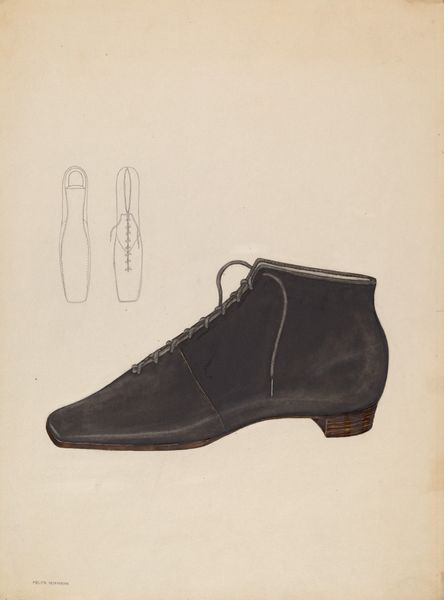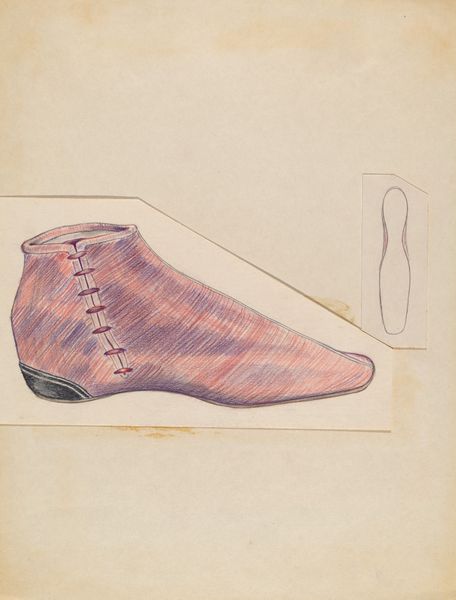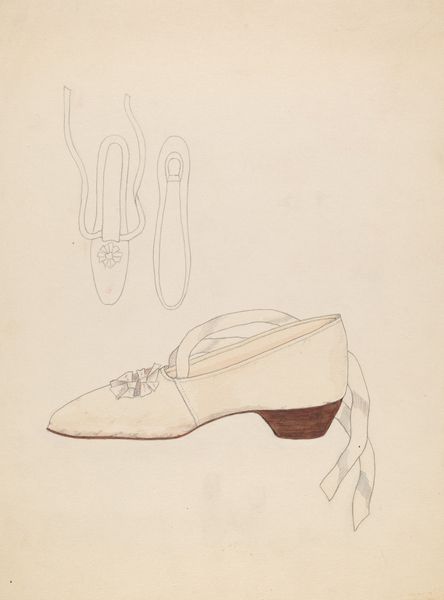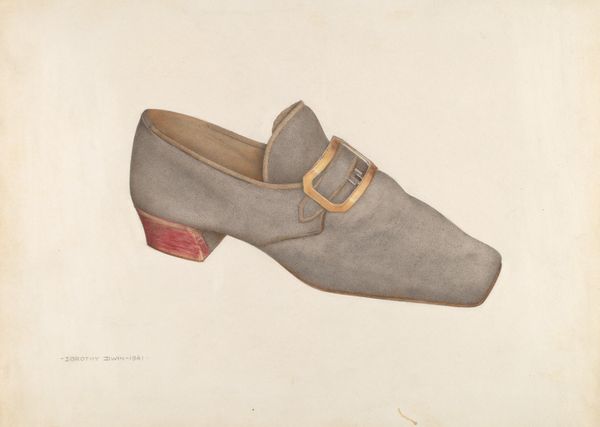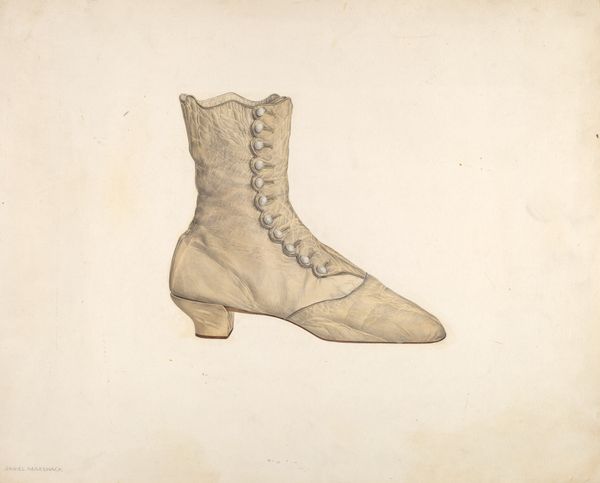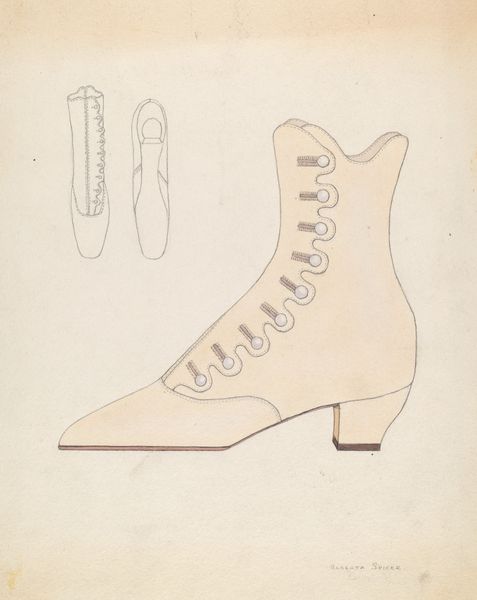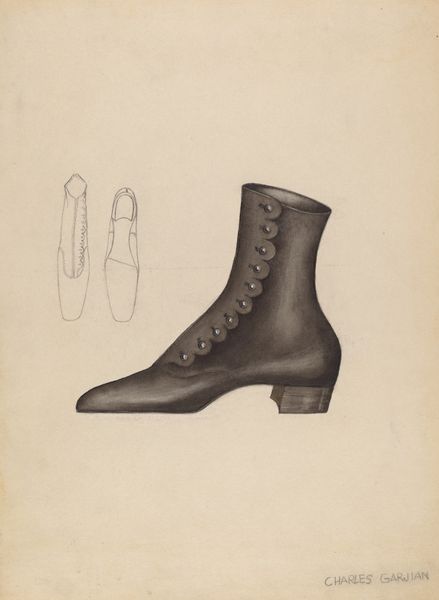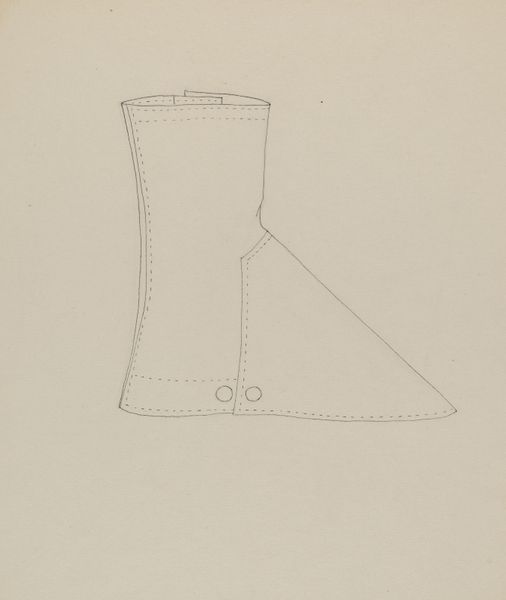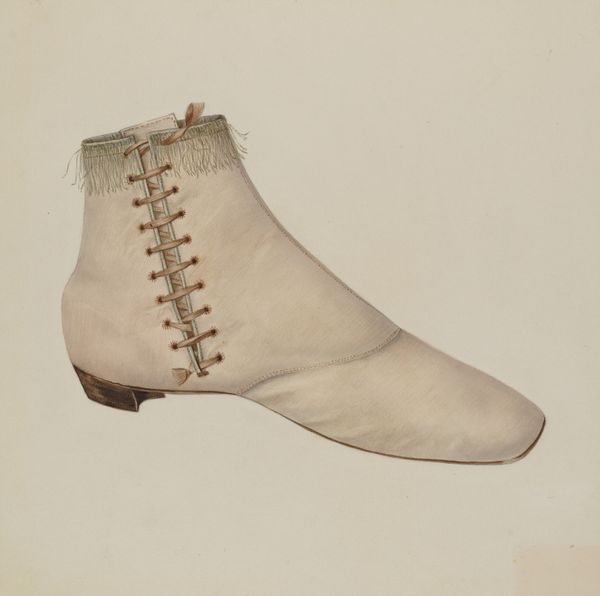
drawing, graphite
#
drawing
#
graphite
#
graphite
#
realism
Dimensions: overall: 28.8 x 22.8 cm (11 5/16 x 9 in.)
Copyright: National Gallery of Art: CC0 1.0
Curator: This is a graphite drawing titled "Shoe," created around 1937 by Bessie Forman. My initial impression is that it has a strange clinical coolness to it, almost like an anatomical study despite its mundane subject. Editor: You've nailed it, the "clinical" aspect. It reminds me of an orthopedist's sketch or even something for a prosthetic design, rather than a fashionable item. The stark, almost colorless depiction strips the shoe of any glamour. I see absence here, or a replacement. Curator: Precisely. The shoe, often a symbol of journey and status, is here rendered in a state of stillness. Graphite as a medium gives the artwork an ephemeral, almost ghostly quality. Is she pointing at loss? In that case, is she commenting on the time where industrialization rendered material possessions and everyday people somehow ethereal? Editor: Possibly, although I’m more drawn to the functional design it showcases. Those precisely rendered laces and the shape itself speak to an era where even everyday objects were meticulously crafted. Consider the economic backdrop of the late 1930s in America—the Great Depression. There’s a resilience embedded in this image, the endurance of basic necessities, even in times of hardship. Curator: That resonates. A "make do and mend" ethos. I wonder about the sketches to the left; are they ghosts of shoes past or future possibilities? I also find the shape, stretched and elongated, almost totemic. Does it speak to a longer tradition where the form is itself a memory aid for something lost or invisible? Editor: It’s intriguing you mention memory. The careful delineation certainly invites prolonged consideration. One can speculate about the individual who might have worn such a shoe and what their life may have entailed in a decade fraught with tension, both economic and sociopolitical. Perhaps Bessie Forman wanted viewers to project the human touch back into the image. Curator: A quiet call for humanity within simple form and basic needs. Thank you. Editor: Thank you. That certainly enriched my understanding.
Comments
No comments
Be the first to comment and join the conversation on the ultimate creative platform.
